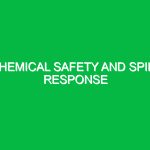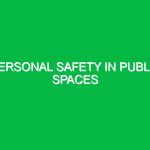Noise pollution is an often-overlooked aspect of workplace safety, yet its impacts can be profound and multifaceted. Noise Control Measures (NCM) play a pivotal role in mitigating the adverse effects of excessive noise exposure in various environments. These measures are not only essential for compliance with health and safety regulations but also for safeguarding the well-being of employees and the surrounding community. This article delves into the significance of Noise Control Measures within the Health, Safety, and Environment (HSE) domain, exploring potential hazards, best practices, and pertinent regulations.
Understanding Noise Control Measures
Noise Control Measures are strategies and interventions designed to reduce noise levels in work environments, aiming to protect workers from hearing loss and other health-related issues. These measures can be physical, administrative, or personal protective equipment (PPE)-based. The implementation of effective noise control is crucial, particularly in industries such as construction, manufacturing, and entertainment, where noise levels can reach harmful thresholds.
The relevance of NCM in the HSE domain cannot be overstated. According to the World Health Organization (WHO), noise pollution is recognized as a significant environmental stressor that can lead to serious health consequences, including hypertension, sleep disturbances, and increased risk of cardiovascular diseases. Thus, establishing robust noise control protocols is not merely a regulatory obligation; it is a fundamental aspect of promoting overall health and safety in the workplace.
Identifying Hazards and Risks Associated with Noise
Before implementing Noise Control Measures, it is critical to identify the potential hazards associated with excessive noise levels. The primary risks involve:
1. Hearing Loss
One of the most immediate risks of prolonged exposure to loud noise is hearing loss. This can be temporary or permanent, depending on the intensity and duration of exposure. For example, workers in manufacturing plants often face continuous exposure to heavy machinery, which can lead to irreversible damage to the auditory system.
2. Psychological Effects
Excessive noise can also lead to psychological stress. Studies suggest that chronic noise exposure may result in anxiety, irritability, and decreased concentration. For instance, office workers subjected to background chatter and ringing phones may find it challenging to focus on their tasks, leading to decreased productivity and increased frustration.
3. Impaired Communication
High noise levels can hinder effective communication, making it difficult for workers to hear instructions or warnings. This lack of communication can pose serious safety risks, particularly in environments where coordination and teamwork are essential.
4. Increased Accident Rates
Noisy environments can lead to increased accident rates. When workers cannot hear alarms or warnings, the chances of workplace injuries rise significantly. A construction site without effective noise management may see more incidents simply because workers are unaware of hazards due to the overwhelming sound.
Best Practices for Noise Control Measures
Implementing effective Noise Control Measures involves a combination of strategies tailored to specific environments. Here are some best practices that can be employed:
1. Engineering Controls
Engineering controls are modifications to equipment or the work environment that reduce exposure to noise. This could include:
- **Installing Sound Barriers:** Using acoustic panels or walls to absorb sound.
- **Vibration Isolation:** Using mounts and pads to reduce vibration transmission from machinery.
- **Maintenance of Equipment:** Regularly servicing machines to ensure they operate smoothly and quietly.
- **Using Quieter Equipment:** Investing in newer, quieter machinery can significantly reduce noise levels.
2. Administrative Controls
Administrative controls involve changes in work practices and policies to reduce noise exposure. These may include:
- **Rotating Job Assignments:** Limiting the time any one worker spends in a noisy environment.
- **Scheduling Work Hours:** Conducting noisy operations during off-peak hours when fewer people are present.
- **Training and Awareness Programs:** Educating employees about noise hazards and the importance of using protective measures.
3. Personal Protective Equipment (PPE)
When noise levels cannot be adequately controlled through engineering or administrative measures, personal protective equipment (PPE) becomes essential. The use of hearing protection devices, such as earplugs and earmuffs, can be critical in preventing hearing loss. It’s vital to ensure that the PPE used is appropriate for the noise levels and comfortable enough for workers to wear throughout their shifts. For instance, construction workers often utilize high-rated earplugs that provide adequate protection while allowing for some environmental awareness.
Case Studies: Real-Life Applications of Noise Control Measures
To illustrate the practical application of Noise Control Measures, consider the case of a manufacturing plant in Ohio. This facility faced significant challenges with noise levels due to heavy machinery. Employees reported frequent headaches and difficulty concentrating, prompting management to take action.
The first step involved a comprehensive noise assessment, identifying areas where noise levels exceeded safe limits. Management then decided to invest in sound-absorbing barriers and implemented a regular maintenance program for all machinery. Additionally, they rotated workers through quieter areas of the plant. Over time, employee complaints decreased, productivity increased, and the company saw a marked improvement in overall morale.
Regulations and Standards Governing Noise Control Measures
Numerous regulations govern noise control in various industries, emphasizing the need for compliance to ensure worker safety. Key regulations include:
1. Occupational Safety and Health Administration (OSHA) Standards
OSHA has set permissible noise exposure limits to protect workers from hearing loss. According to the OSHA standard, the permissible exposure limit (PEL) for noise is 90 decibels (dB) over an 8-hour workday. If noise levels exceed this limit, employers are required to implement a hearing conservation program.
2. National Institute for Occupational Safety and Health (NIOSH) Recommendations
NIOSH recommends a more stringent exposure limit of 85 dB over an 8-hour workday. Their guidelines suggest that employers conduct regular noise assessments and provide hearing protection when needed.
3. ANSI/ASA Standards
The American National Standards Institute (ANSI) and the Acoustical Society of America (ASA) have established various standards concerning noise control and measurement. These standards provide guidelines for measuring noise levels and implementing effective noise control strategies.
Conclusion: The Importance of Proactive Noise Control
Noise Control Measures are a vital component of the Health, Safety, and Environment framework. By recognizing the hazards associated with excessive noise exposure and implementing effective strategies to mitigate these risks, organizations can foster healthier and safer work environments. The stories of companies that have successfully integrated NCM into their operations serve as powerful reminders of the benefits that come from prioritizing employee well-being.
Ultimately, noise control should not be an afterthought but rather an integral part of workplace safety protocols. Through careful planning, adherence to regulations, and a commitment to employee education, businesses can significantly reduce the risks associated with noise, paving the way for a more productive and healthier workforce.


